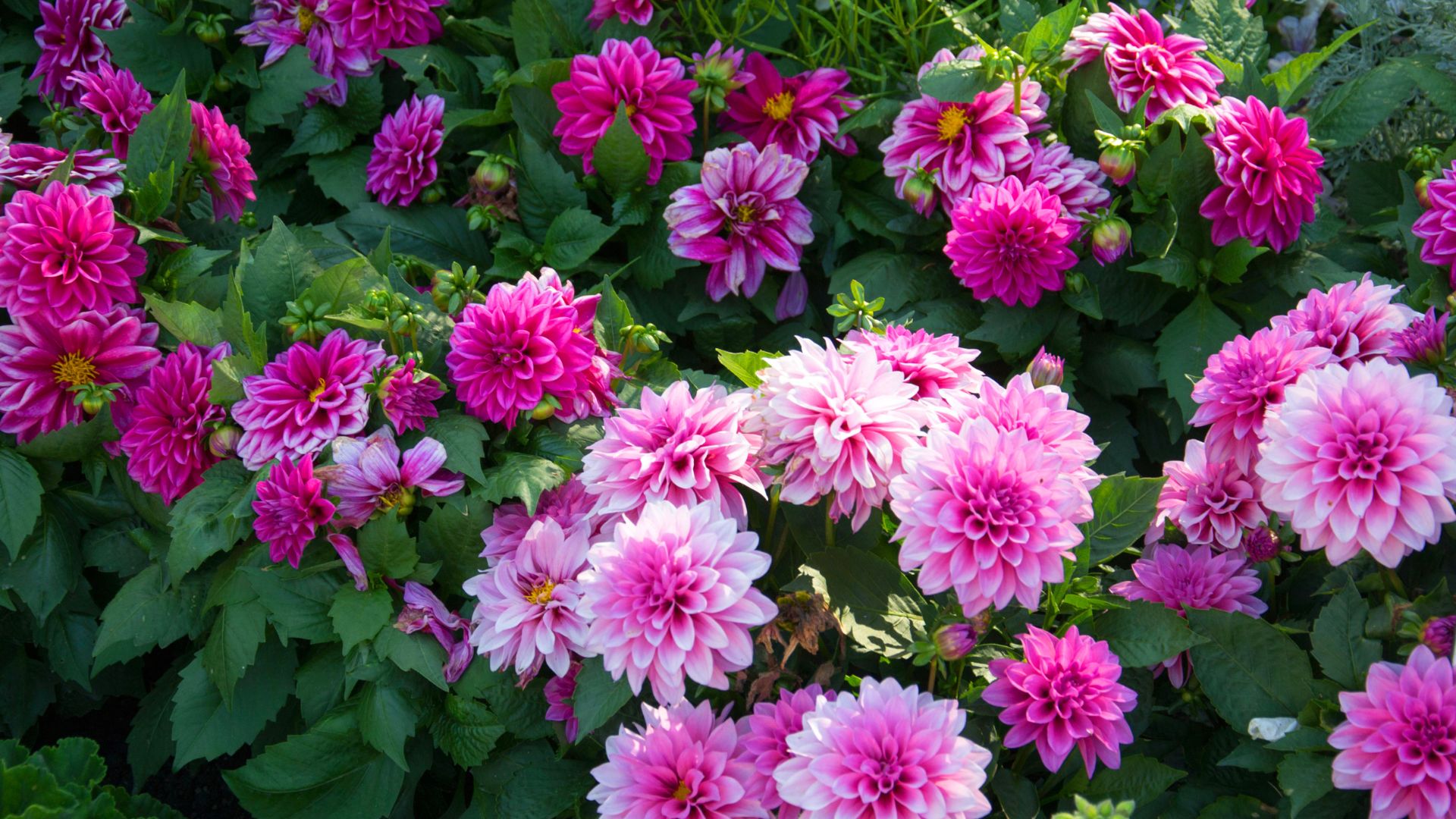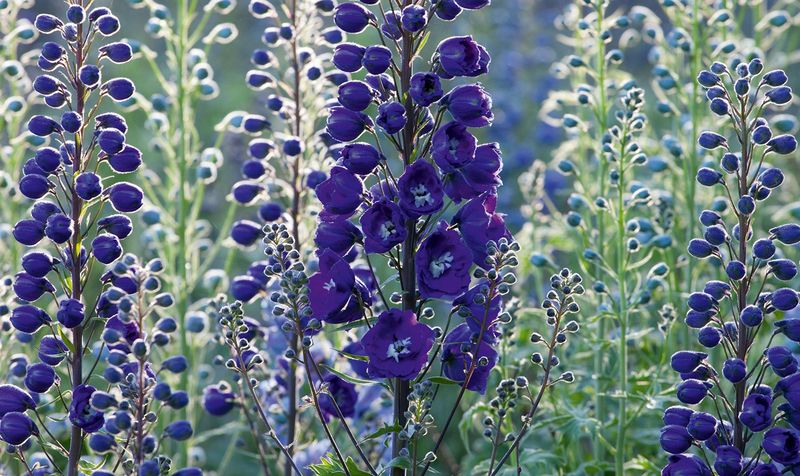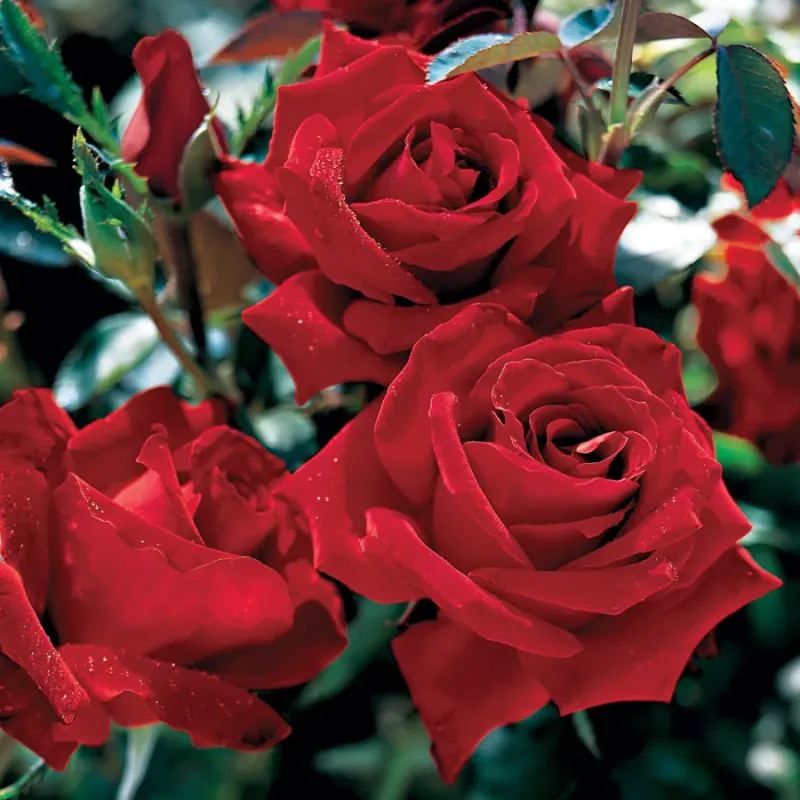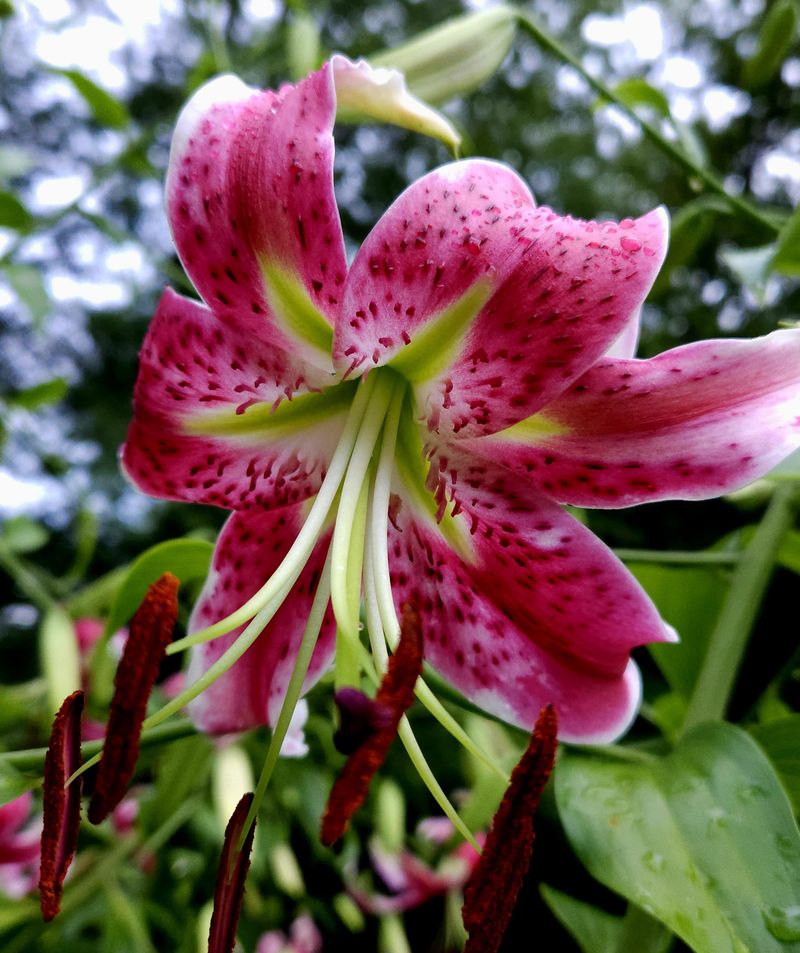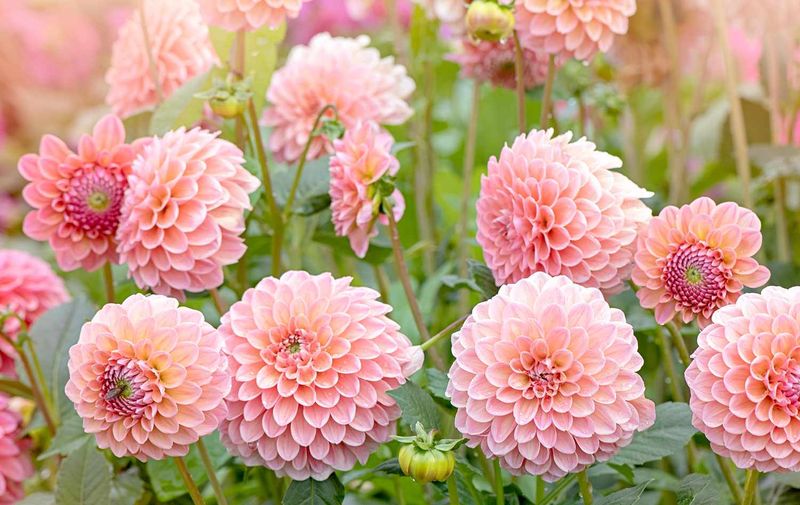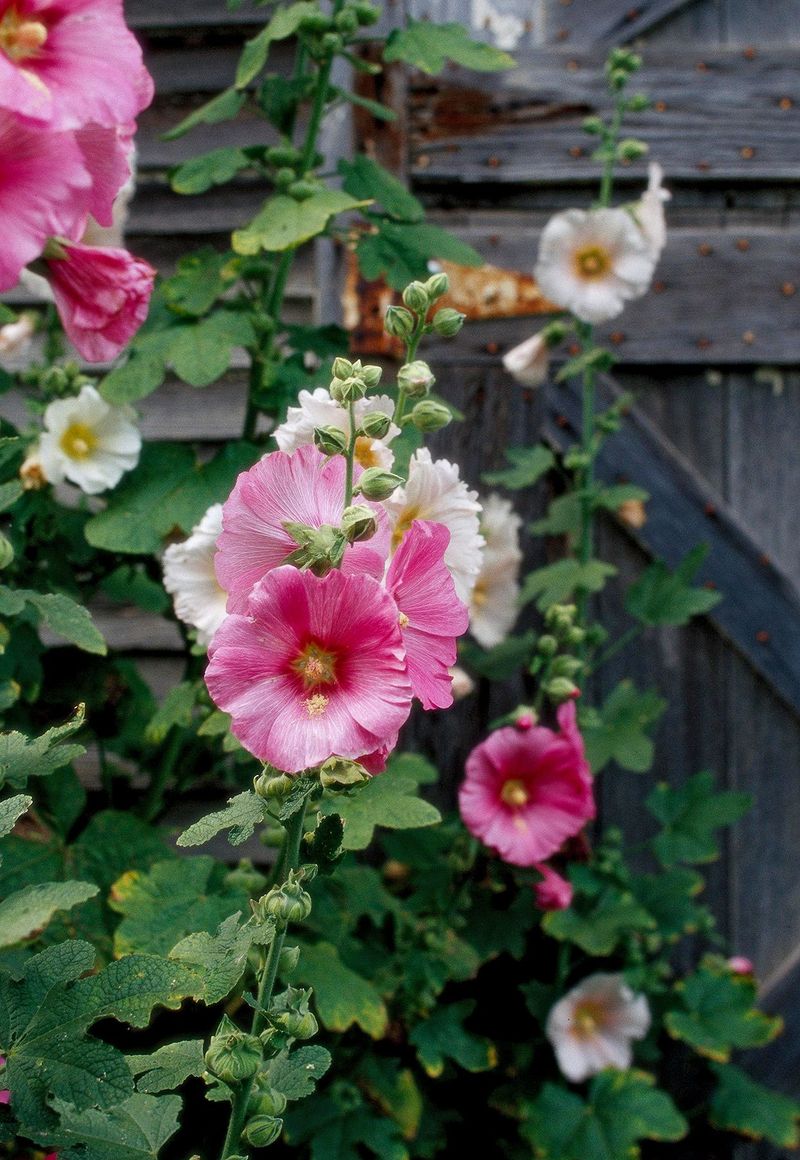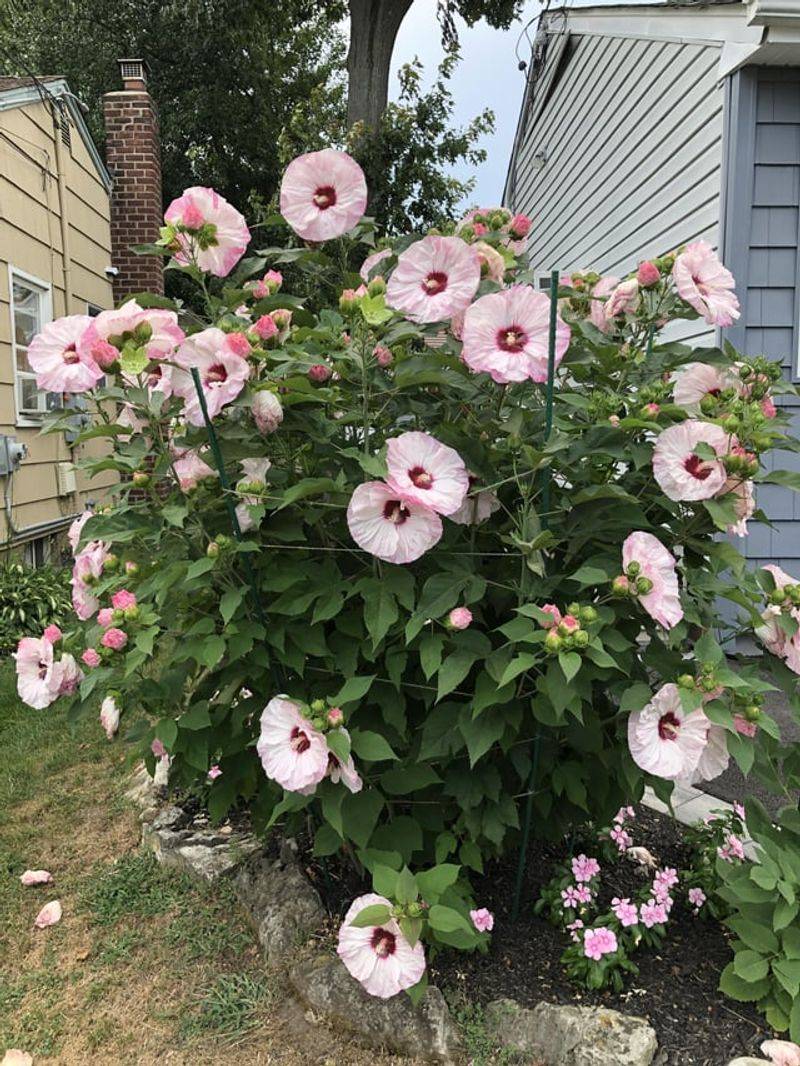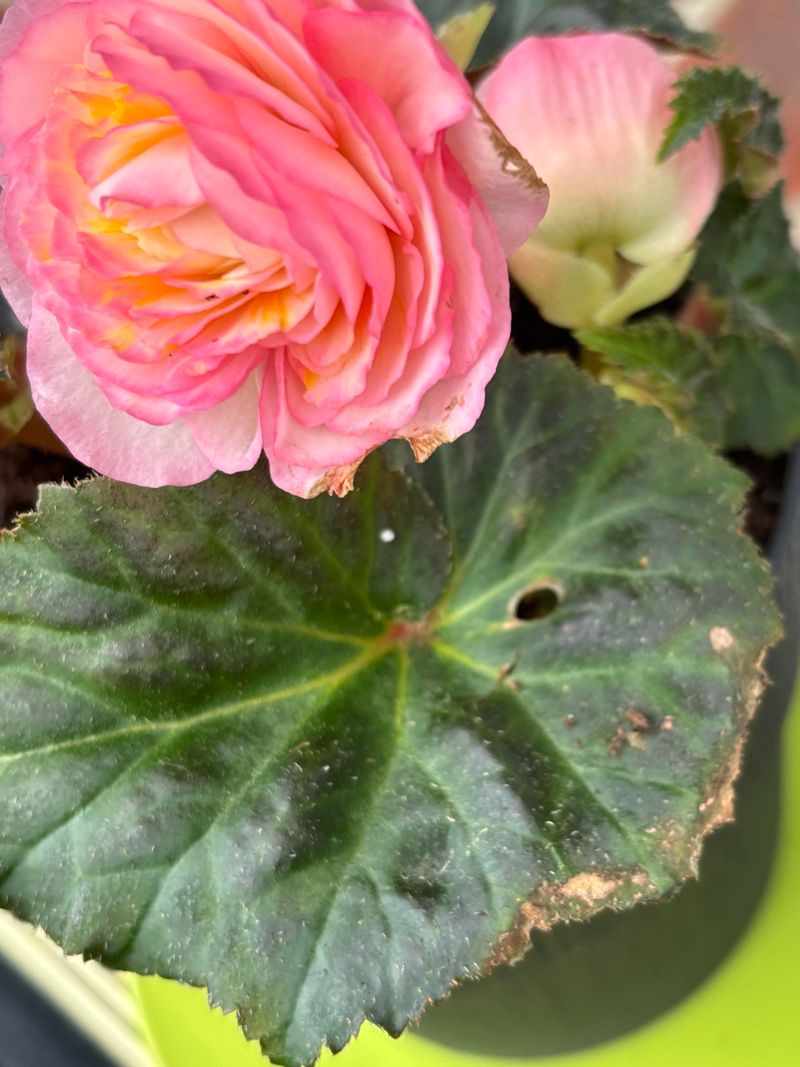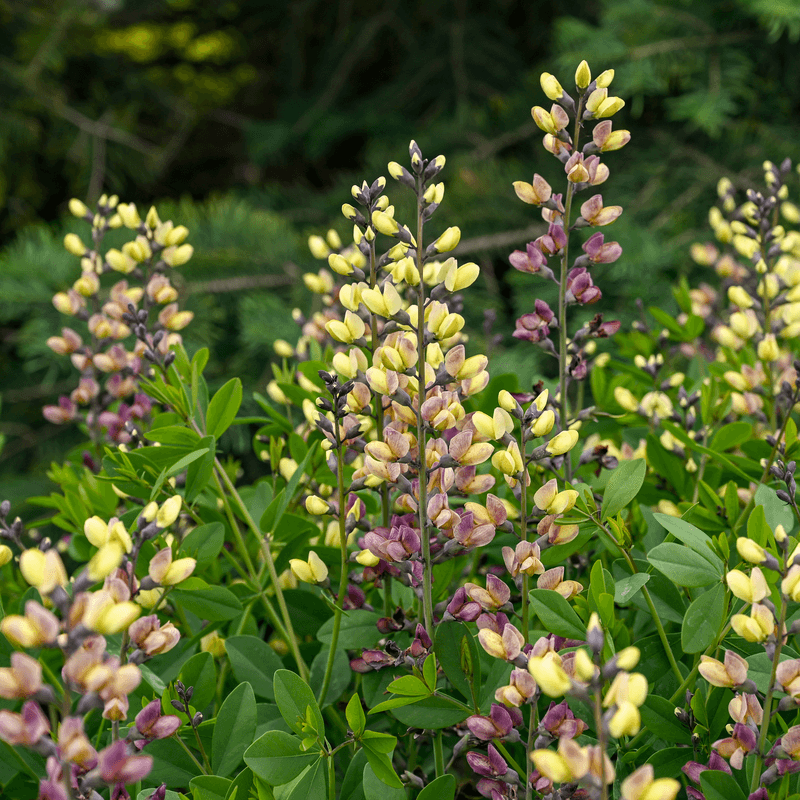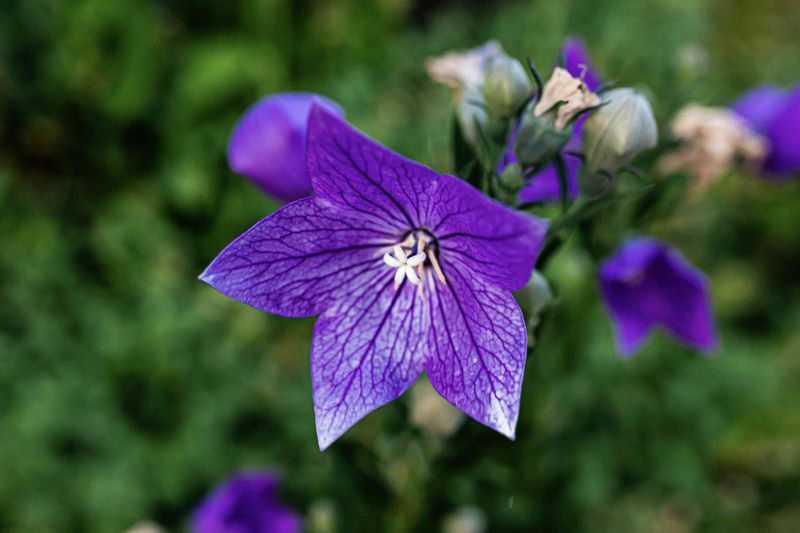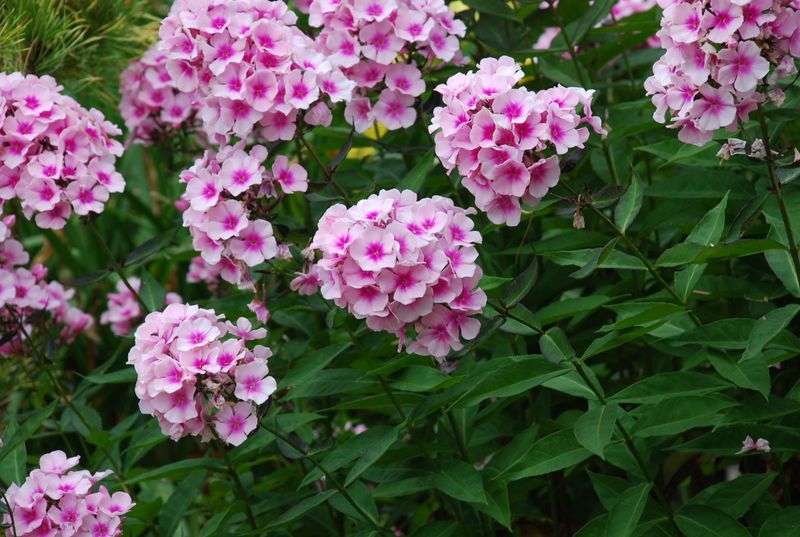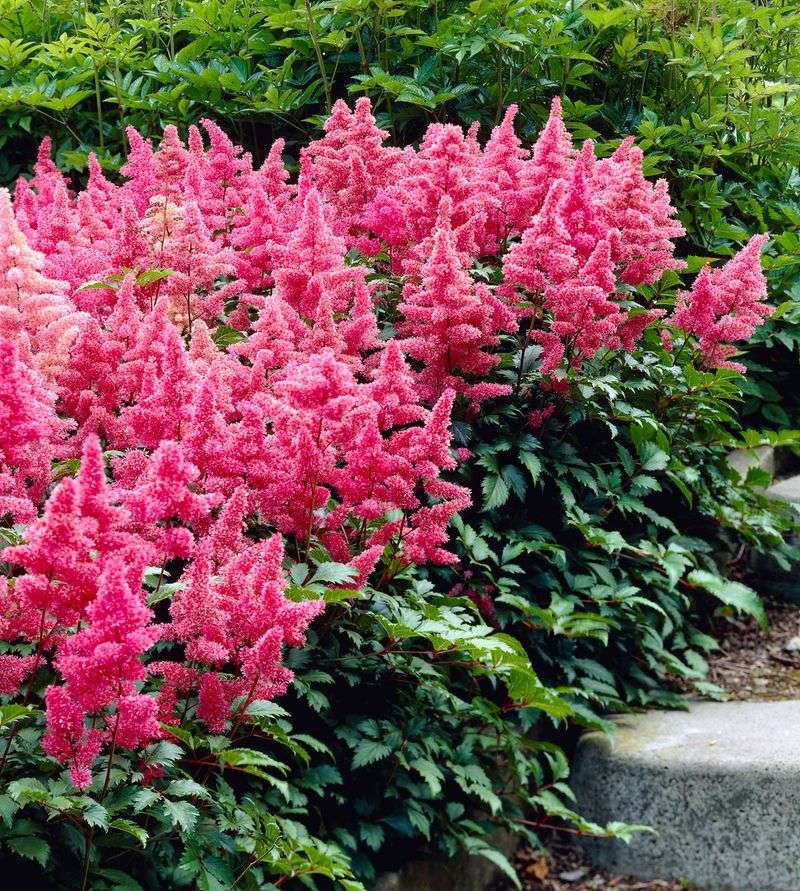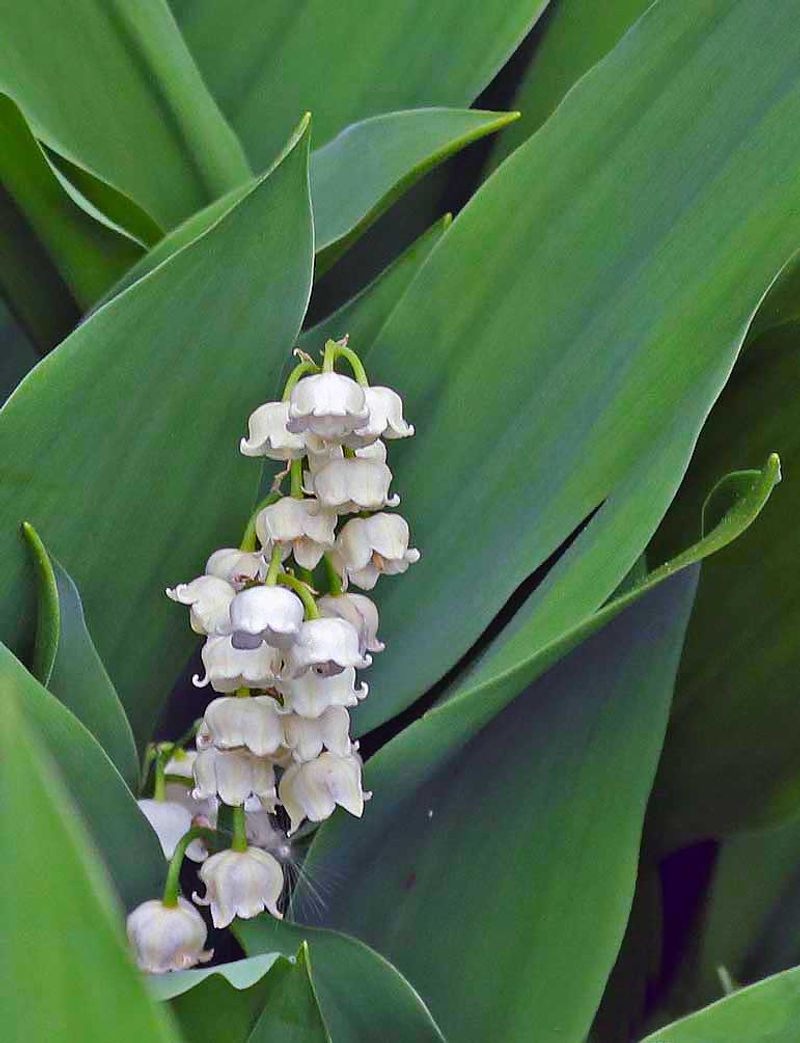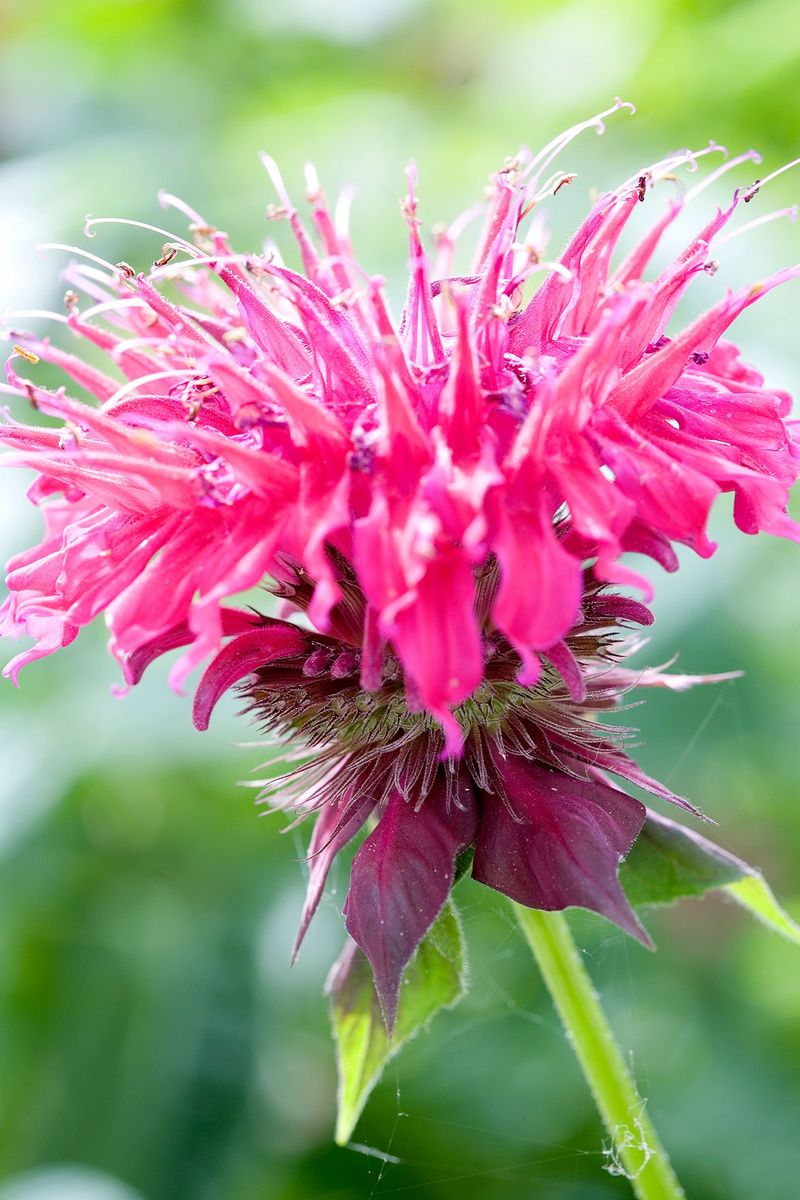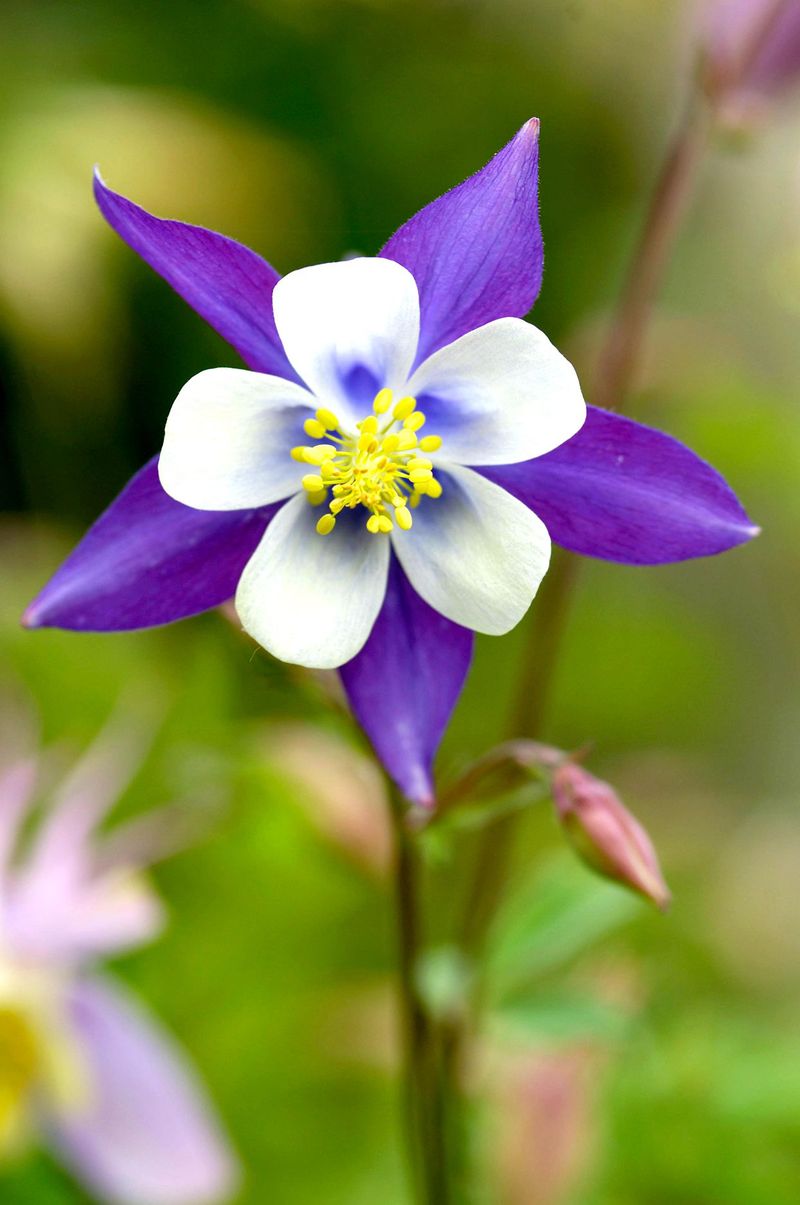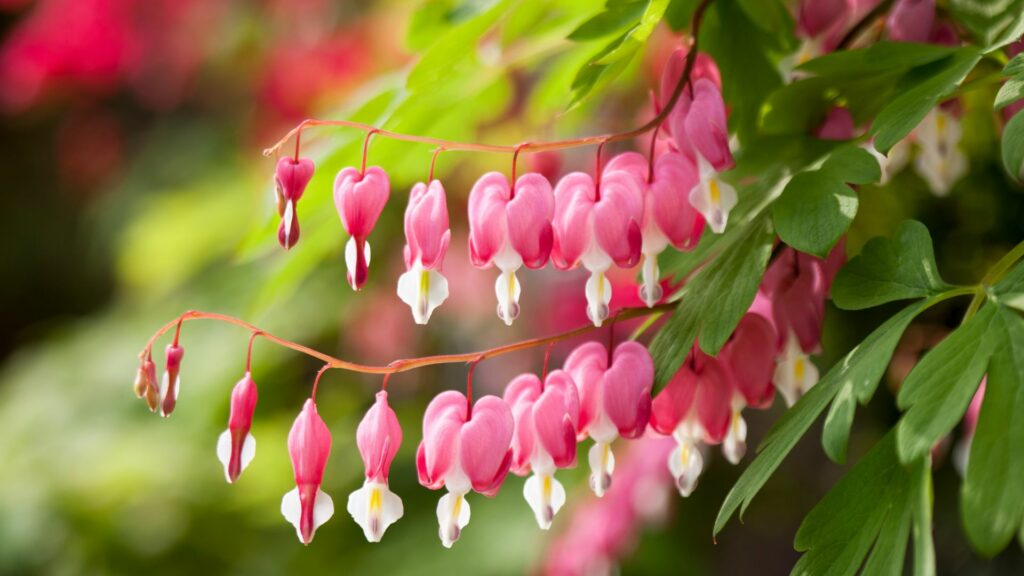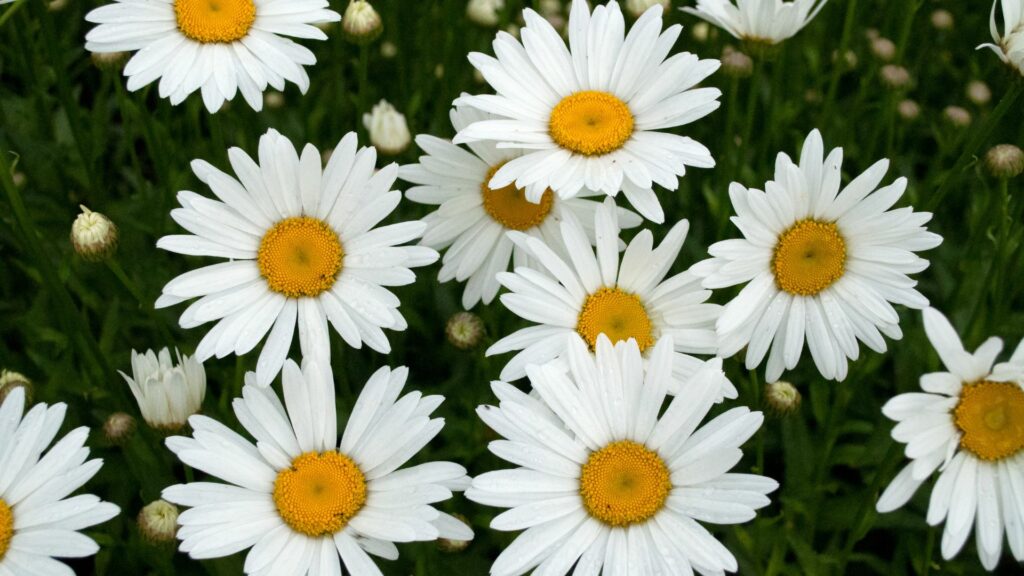Dreaming of a garden bursting with color but dreading the endless upkeep? I’ve been there—lured in by stunning blooms, only to realize they demand constant care. Deadheading, disease control, dividing… it quickly turns into a full-time job.
The good news? Not all flowering perennials are high-maintenance divas. Some offer season-long color with barely any effort, and they’re just as beautiful as the fussy ones. It’s all about picking the right plants from the start.
For every demanding bloomer, there’s a laid-back alternative that thrives with minimal fuss. Low-maintenance doesn’t mean sacrificing beauty—it means more time to actually enjoy your garden. And honestly, who doesn’t want that?
1. Delphiniums: Towering Beauties With Demanding Personalities
Delphiniums create spectacular vertical interest with their tall spires of blue, purple, or white flowers. However, these classic cottage garden favorites require staking, regular feeding, and protection from strong winds that can snap their brittle stems.
They’re also magnets for slugs and snails that can decimate young plants overnight. Add their susceptibility to powdery mildew and their short-lived blooms that need prompt deadheading, and you’ve got a high-maintenance relationship on your hands.
Consider planting Salvia ‘May Night’ instead. This sturdy perennial offers similar deep blue-purple spikes but stands upright without staking. It’s drought-tolerant once established, resists most pests, and will rebloom if cut back after its first flush of flowers.
2. Hybrid Tea Roses: Prima Donnas Of The Garden
Hybrid tea roses produce those perfect, exhibition-quality blooms that grace florist shops. The price for this perfection is constant vigilance against black spot, powdery mildew, and Japanese beetles that find these roses irresistible.
Regular spraying with fungicides becomes a weekend ritual, along with precise pruning requirements and winter protection in colder climates. They also demand frequent deadheading to maintain continuous blooming and specific fertilizing schedules to produce their show-stopping flowers.
Swap them for Knockout Roses or Drift Roses instead. These modern shrub roses offer months of colorful blooms without spraying. They’re disease-resistant, self-cleaning (no deadheading needed), and bounce back even after harsh winters with minimal care beyond a simple spring pruning.
3. Oriental Lilies: Fragrant Divas With Special Needs
Oriental lilies enchant with their intoxicating fragrance and dramatic blooms, but these showstoppers come with baggage. Their primary nemesis is the red lily beetle, which can strip plants bare in days without regular inspection and hand-picking or chemical controls.
They require perfect drainage yet consistent moisture—a tricky balance to achieve. After flowering, you can’t simply cut them back as they need their foliage to store energy for next year’s blooms, leaving you with increasingly unattractive plants taking up space.
Try daylilies (Hemerocallis) as an alternative. These tough performers come in countless colors, require minimal care, and aren’t bothered by lily beetles. Modern reblooming varieties like ‘Stella de Oro’ or ‘Happy Returns’ offer months of flowers without deadheading, and their grassy foliage stays attractive all season.
4. Dahlias: Tuber-Storing Beauties With Winter Worries
Dahlias deliver spectacular blooms from midsummer until frost in sizes ranging from tiny pompoms to dinner-plate dimensions. The catch? In most climates, you’ll need to dig up their tubers after the first frost, clean them, let them cure, and store them in just-right conditions all winter.
During the growing season, they need regular deadheading, staking for taller varieties, and protection from earwigs and slugs. They’re also thirsty plants requiring consistent moisture and feeding to produce their magnificent blooms.
Plant coreopsis instead for similar bright colors with none of the winter storage hassle. Varieties like ‘Moonbeam’ or ‘Zagreb’ offer months of cheerful yellow or gold flowers. They’re drought-tolerant once established, rarely need staking, and many newer varieties are self-cleaning.
5. Hollyhocks: Biennial Beauties Plagued By Rust
Hollyhocks create a nostalgic cottage garden feel with their tall stalks of colorful blooms. Unfortunately, they’re almost always afflicted with hollyhock rust, an unsightly orange fungus that spreads quickly and ruins their appearance, starting from the bottom leaves and working upward.
Most hollyhocks are technically biennials, meaning they bloom in their second year then die, requiring you to continuously start new plants to maintain their presence. They self-seed readily, often appearing where you don’t want them, and need staking to prevent toppling in wind or rain.
For a similar vertical accent without the headaches, plant foxgloves. While also technically biennial, newer perennial varieties like Digitalis ‘Camelot’ return reliably for years. They’re more resistant to disease, self-seed more manageably, and create the same cottage garden aesthetic with much less maintenance.
6. Japanese Peonies: Brief Bloomers With Messy Aftermath
Japanese peonies produce luxurious blooms that stop traffic for about two weeks each year. After their brief but spectacular show, you’re left with a rather ordinary-looking bush for the remaining 50 weeks, one that’s prone to powdery mildew in late summer.
Heavy flowers often flop face-down after rain, requiring cages or supports. The spent blooms turn brown and mushy, needing prompt removal to prevent botrytis blight. Many varieties also take several years after planting before producing significant flowers.
Consider Russian sage (Perovskia) for longer-lasting impact. Its lavender-blue flower spikes and silvery foliage provide interest from midsummer through fall. It stands upright without staking, tolerates drought once established, and resists most pests and diseases while requiring virtually no deadheading.
7. Perennial Hibiscus: Late Risers With Beetle Troubles
Perennial hibiscus (Hibiscus moscheutos) produces dinner-plate sized blooms that make a dramatic statement. However, these plants are notoriously late to emerge in spring, often not showing signs of life until late May, leaving gardeners wondering if they’ve died over winter.
Japanese beetles consider them a delicacy, turning their leaves into lace by midsummer without regular intervention. Each stunning flower lasts just one day, and the plants require consistent moisture—even brief drought can cause bud drop and dramatically reduce flowering.
Switch to Echinacea (coneflower) for reliable, long-lasting summer color. Modern varieties come in similar bright colors but with flowers that last for weeks. They emerge reliably in early spring, tolerate drought once established and attract butterflies rather than destructive beetles.
8. Tuberous Begonias: Shade Lovers With Storage Headaches
Tuberous begonias produce magnificent blooms in shady spots where few other plants offer such vibrant color. The downside is their complete intolerance of frost, requiring you to dig and store tubers each fall in most climates, similar to dahlias.
They’re extremely fussy about water—too little and they wilt dramatically; too much and they rot. Powdery mildew becomes a problem in humid conditions, and slugs consider them gourmet dining. Their brittle stems break easily in wind or when brushed against during garden maintenance.
Plant coral bells (Heuchera) instead for trouble-free shade color. Modern varieties offer foliage in burgundy, orange, purple, or lime green that looks stunning all season. They’re winter-hardy in most regions, resist slug damage, and their delicate flower stalks add vertical interest.
9. Lupines: Short-Lived Stars With Climate Complaints
Lupines create spectacular spires of pea-like flowers in rainbow colors, but these cool-climate natives sulk in hot, humid summers. They often die after just 2-3 years even in ideal conditions, requiring frequent replacement to maintain their presence in your garden.
Aphids adore lupine buds and can destroy the flower display before it begins. The plants are also particular about soil conditions, preferring acidic, lean soil and resenting rich garden loam. After flowering, the foliage often becomes unattractive, and deadheading is essential to prevent aggressive self-seeding.
Plant Baptisia (false indigo) for a similar look with much longer lifespan. These native plants form large, shrub-like clumps with lupine-like flower spikes in blue, yellow, or white. Once established, they can live for decades with zero care.
10. Balloon Flowers: Late Bloomers With Finicky Habits
Balloon flowers (Platycodon) charm gardeners with their puffy buds that pop open into star-shaped blooms. However, they’re frustratingly late to emerge in spring, often causing gardeners to accidentally dig them up thinking the space is empty.
They resent being moved or divided once established, making garden redesigns challenging. The flowers require regular deadheading to prevent messy seed pods, and their hollow stems are brittle, snapping easily in storms or when brushed against during garden maintenance.
Choose Campanula ‘Blue Waterfall’ as an easier alternative with similar blue bell-shaped flowers. This hardy perennial emerges reliably in early spring, cascades beautifully over edges, and blooms for months with minimal care. It withstands rough weather without staking and requires little to no deadheading.
11. Garden Phlox: Mildew Magnets With Spreading Issues
Garden phlox (Phlox paniculata) produces gorgeous fragrant flower clusters that brighten the mid-summer garden. Unfortunately, powdery mildew is almost inevitable on these plants, turning their lower leaves white then brown by August, regardless of how much air circulation you provide.
They spread enthusiastically through underground runners, often popping up where they weren’t invited. Spider mites frequently attack during hot, dry periods, causing leaves to yellow and drop. Regular division every few years is necessary to maintain vigor, and taller varieties need staking to prevent flopping.
Plant Nepeta (catmint) varieties like ‘Walker’s Low’ instead for similar color with none of the problems. These pest-resistant perennials bloom in waves from late spring through fall if sheared back after the first flush.
12. Astilbe: Thirsty Shade-Lovers That Wilt Easily
Astilbes create feathery plumes of pink, red, or white flowers in shady spots. Their Achilles’ heel is their insatiable thirst—miss a few days of watering during summer heat and they’ll collapse dramatically, often beyond recovery, leaving a gap in your carefully planned garden.
They require rich, consistently moist soil that’s difficult to maintain without irrigation systems. After flowering, the spent plumes need cutting back to prevent a messy appearance. In regions with hot summers, they can struggle regardless of care, becoming increasingly stressed as temperatures rise.
Try hardy geraniums like Geranium macrorrhizum instead. These adaptable plants thrive in the same partially shaded locations but tolerate both dry spells and periods of excessive moisture. Their attractive lobed foliage stays neat all season, and many varieties bloom for months without deadheading.
13. Lily Of The Valley: Sweet-Scented Spreaders Gone Wild
Lily of the valley charms with its fragrant white bells and woodland character. The problem lies in its aggressive spreading habit—what starts as a small patch can quickly become a garden takeover through underground rhizomes that are nearly impossible to fully remove once established.
All parts of the plant are highly toxic, making it concerning in gardens where children or pets play. Its beauty is fleeting, with the flowers lasting just a couple of weeks in spring, followed by plain green leaves for the remainder of the growing season.
Plant Brunnera macrophylla ‘Jack Frost’ for a better-behaved shade option. Its tiny blue flowers resemble forget-me-nots above stunning silver-veined foliage that looks decorative from spring through fall.
14. Monarda (Bee Balm): Mildew-Prone Spreaders
Monarda attracts pollinators with its crown-like flowers in vibrant reds, pinks, and purples. Despite these virtues, powdery mildew regularly turns its foliage white by midsummer in most gardens, creating an unsightly mess beneath the flowers.
Many varieties spread aggressively through underground rhizomes, quickly escaping their intended boundaries. The plants often become leggy and flop over without support, especially after summer rains. Once the relatively short bloom period ends, you’re left with unattractive stems and mildewed leaves.
Opt for Agastache (hyssop) instead for similar pollinator appeal without the problems. These aromatic perennials produce spikes of tubular flowers from summer until frost. They maintain their upright habit without staking, resist powdery mildew, and stay within their allotted space without invasive spreading.
15. Columbines: Short-Lived Self-Seeders With Leaf Miner Issues
Columbines (Aquilegia) enchant with their intricate, spurred flowers dancing above ferny foliage. Their downside? They’re short-lived perennials, often declining after just 2-3 years, requiring regular replacement or reliance on their somewhat unpredictable self-seeding habit.
Leaf miners almost inevitably create unattractive white tunnels through the foliage by midsummer, ruining the plants’ appearance after flowering.
Choose Hellebores for more lasting elegance. These shade-tolerant perennials offer similar nodding, complex flowers in late winter or early spring when the garden needs color most. They can live for decades with minimal care, maintain attractive evergreen foliage year-round.
16. Bleeding Heart: Spring Charm That Fizzles Fast
This one brings early-season delight with its unique heart-shaped flowers dangling from arching stems. But as temperatures rise, this plant quickly goes dormant—disappearing completely by midsummer and leaving bare gaps in your garden beds.
It prefers cool, moist, shaded spots and wilts easily in sun or heat. The foliage often yellows unattractively before dying back entirely. If you’re not constantly tending the soil and managing companion plantings to fill the void, the disappearing act can disrupt your garden’s visual flow.
Replace it with Pulmonaria (lungwort) for lasting spring interest. It has charming early blooms in pink, blue, or purple and boasts silver-speckled foliage that sticks around through summer. Pulmonaria tolerates shade, resists deer, and rarely needs dividing or deadheading.
17. Shasta Daisy: Cheerful But Constantly Needy
Shasta daisies (Leucanthemum × superbum) add a classic charm with their crisp white petals and sunny centers. But to keep them tidy, you’ll need to deadhead frequently, divide clumps every couple of years, and monitor for crown rot and aphids. Tall varieties often flop without support, especially after rain.
Their bloom period can also be surprisingly short if not consistently deadheaded. And in overly rich soil, they tend to grow leggy and weak-stemmed, making them more prone to toppling.
Try Gaillardia (blanket flower) instead. These tough perennials thrive in hot, dry conditions, produce months of bold blooms in sunset hues, and require little more than the occasional trim. They don’t need staking or division and shrug off pests and disease.

